[Editorial] Fat as a Death Sentence in Horror
Trigger warning of fat-phobia. I use the word “fat” as a descriptor rather than a derogatory term. I have described various actors and actresses as fat as that is how I would describe them but I do not mean to cause any offence by the use of this word.
I am a fat person – not a joke, just a fact. And, I would say naturally and inevitably, I learned to hate my body. I say naturally and inevitably because the society we currently live in is not kind to fat people. Fat people are victims of medical negligence (I News, 2017) and earn less money in their employment (BBC News, 2016). We are not taken seriously. Showing your body on social media can bring a number of insults which range from “concern” to straight up fat-phobia. Fat people in the spotlight are told they are glamorising obesity just by existing (Irish Times, 2018 (trigger warning for Piers Morgan). Our societal opinions are moulded in part by the media and how they choose to represent certain peoples, issues and events. Fat bodies in horror tend to be expendable as ‘deserved’ victims or to provide another level of repulsion to an antagonist.
Victims
A widely held belief is that being fat is a choice. You choose to eat that much therefore you can choose to stop eating. You choose to be lazy so you can choose to exercise. Therefore when a fat victim has been targeted due to their size the audience could – and are sometimes encouraged - to form the opinion that their being fat was a choice and therefore they deserve the fate the film has for them. Unfortunately this line of thinking that fat is a choice does not take into account the nuances around eating disorders, mental health illnesses, biological concerns and disabilities.
Seven
Seven (1995) shows new detective partners Somerset and Mills attending their first crime scene. The victim is an overly obese man face down in a plate of food. Mills immediately says “Somebody phone Guinness. I think we’ve got a record here” showing a lack of empathy to the victim and bringing attention to his size. He then states “Who said this was murder? Guy’s heart’s gotta be the size of a canned ham. If this isn’t a coronary well, I don’t know.” The man in charge of solving this mystery doesn’t believe this is even a crime. He has judged the body and come to the conclusion that this man’s death was inevitable because of his size. At the autopsy, with the victim’s body on the bench, Mills says “Oh, man. How does someone let themselves go like that?” The coroner comments that it took 4 orderlies to get him on the table. Mills asks “How’d the fat fuck ever fit out his front door?” They spend this exchange talking about this man’s weight and lifestyle decisions rather than the cause of death and who did this to him. It's unnecessary and lacks empathy which encourages the audience to also not care for how this man died. As the detectives brief the the Captain on the case, he comments that the motive was “someone had a problem with the fat boy and decided to torture him. Simple as that.” That’s a reasonable motive in this world, because they are fat and therefore deserve to be force fed food for 12 hours until he haemorrhaged and died?
Zombieland
In Zombieland (2009) Columbus explains the rules of how to survive in the apocalypse, one being cardio as the film shows us a fat man running away from a zombie, to fall and be eaten. The film is telling us that a fat man cannot possibly survive the zombie apocalypse because they can’t run – because he is fat. Not to shame my thin friends but some thin people would also struggle to run away from a horde of the undead because thinness does not equal fitness.
Silence of the Lambs (1991) follows Jame Gumb who wants to use the woman he has kidnapped to make a skin suit. He purposefully targets overweight women to starve them so their skin will be easier to remove. His most recent victim, Catherine, is average sized by regular people’s standards but the film tells us she is large enough for a man to make a skin suit out of her and therefore large enough to have a target on her back.
All 3 of these examples are where the victims are targeted purely for their body size. Being fat is reason enough.
Fat Male Antagonist
Harvey
Where horror decides to implement fat bodies into films as an antagonist, they are not only employing the actor’s skill for the performance but the actor’s body. We can see that in many casting decisions - typical horror tropes like the ‘dumb blonde’ will cast a blonde attractive actress, or the ‘spawn of Satan’ will have ginger hair. The physical attributes of these actors help convey the story to the audience non-verbally. When a film has cast a fat person into the role as the antagonist, what thoughts do they want to come to mind? Recall Harvey in The Human Centipede II (2011). Harvey is a lonely man, who is obsessed with the original The Human Centipede (2009) and wants to recreate the body horror with more victims. Harvey is meant to gross out the audience, but not just with his warped ambitions, but with his body. There are shots with him just in his underwear so we see his large belly which is conventionally unattractive and he is shown to be sweaty and greasy which gives us a feeling of uncleanliness – we are meant to be disgusted by the sight of him.
Dennis Nedry
Dennis Nedry in Jurassic Park (1993) is portrayed as a money grabbing, lazy, fat IT man. There is a point where he is called a slob as his work place is a mess, strewn with sweet wrappers and cans of pop. When Hammond is looking for him he instructs his employees to “check the vending machines!”. I know one could argue that that is where Nedry claimed he went but the intended connotations of a fat man being distracted and spending a considerable amount of time by the vending machines is not lost. This line would not have worked for a thin character. Nedry being fat helps to tell the story of his lazy work ethic as well as his greed for money.
Fat Female Antagonist
Annie Wilkes
We have been encouraged by the media to think of being fat as one of the worst things that can happen to a person. It is taken as an indication of ‘letting go’ and ‘not looking after one-self’. To that end, fat women tend to be portrayed as unfeminine, and in the male gaze of the patriarchy – being less feminine equates to not being attractive. Usually fat female characters don’t wear makeup to accentuate their perceived ugliness against the more feminine (read: beautiful) characters. We see this with Kathy Bates’s Annie Wilkes in Misery (1990). How could James Caan possibly fancy Annie. Not just because she is a sociopath but the non-verbal cue of her being a fat woman tells the audience she is not desirable.
Eddie’s mum in IT (2017) embodies the overbearing mother trope which we are meant to find frustrating, but the casting choice to use a fat actress with gratuitous shots of her large neck and chin, while she heavily breaths add to this repulsion the film wants us to experience, not only by her actions, but by her body which seem to be made more grotesque by her weight.
Big Mama
The Hills Have Eyes (2006) has a female mutant named ‘Big Mama’. In the Wikipedia entry for this character it states “lacks deformities entirely aside from her baldness and obesity”. Charming. You have to question why they would cast a larger woman in the role of a mutant if it wasn’t to use her body to convey her ‘mutations’ if the choice is not to use any prosthetics like many of the other mutants. Side bar; the use of a bald actress is used to signal to the audience her ugliness. Western beauty standards for women need to have long luscious hair, so when we remove that hair this is seen as unattractive and masculine.
Fat As a Hero
The hero of the story is the person we all want to be. Imagine Sidney Prescott in the Scream franchise, or Erin in You’re Next (2011). Most of us also want to be seen as strong and capable, smart and cunning, so we too could survive the horror film – they are horror role models. Queenie, played by Gabourey Sidibe in American Horror Story (2011), is a fat black woman and she does experience isolation due to her race and is mocked by some characters for her size – but it does not define her. Queenie is at the top of her witch craft game which eventually means she is a member of the Witches Council, is empathetic and loving of her witch family and is a gifted mathematician. Her being fat is not a characteristic and not the cause of her demise.
IMAGE 10
Scary Movie
This is such a stretch of an example but hear me out. Scary Movie (2000) – the scene where they are parodying Tatum’s death in Scream (1996) – a fat woman in place of Rose McGowan while Ghostface attacks. The joke is that the fat woman is actually quite nimble and evades the slashes before attempting the cat flap in the garage door. She struggles to fit though before getting stuck and the door falls down on her. I do appreciate the choice to show this woman being quick footed and able to dodge and weave which subverts our expectations that fat people are slow moving, clumsy and lazy. Many fat people are incredibly quick, graceful, well-balanced and flexible – just watch any season of RuPaul’s Drag Race (2009) to see an example of a bigger queen death drop.
Important to note, the examples I have provided above are not the lead characters of their stories, they are supporting roles. I wanted to provide more examples of fat people in the heroic roles of horror but currently that pool is not deep as films and TV have a reputation for not being inclusive with their casting. This highlights the need for movements like body positivity and body neutrality which are challenging how bodies are currently represented. This will hopefully start to trickle into the film and tv we consume and we will begin to see all bodies be employed regardless of the non-verbal connotations they currently bring.
I believe a positive future for body representation will be;
Fat actors are the villains of the story and their fatness does not contribute to the reasons which make them evil and repulsive
Fat characters need to start being in the front of these stories, not only supporting the main thin character
Fat people could and should survive horror and we need to move away from the narrative that being fat is the death sentence we have been conditioned to believe.


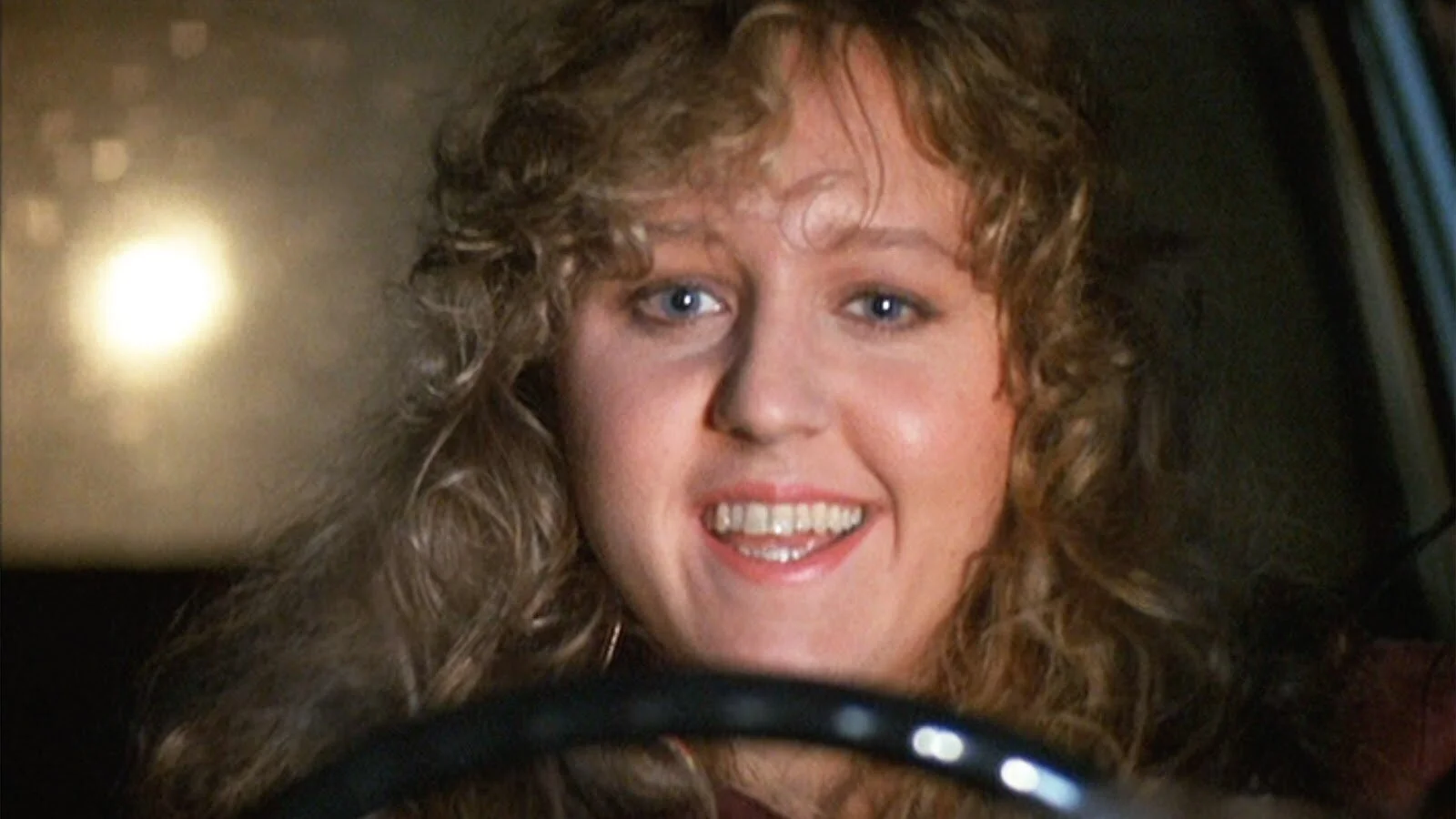
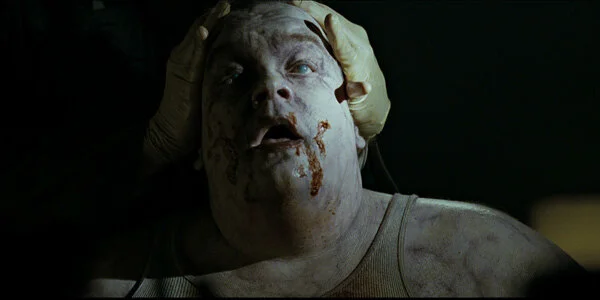


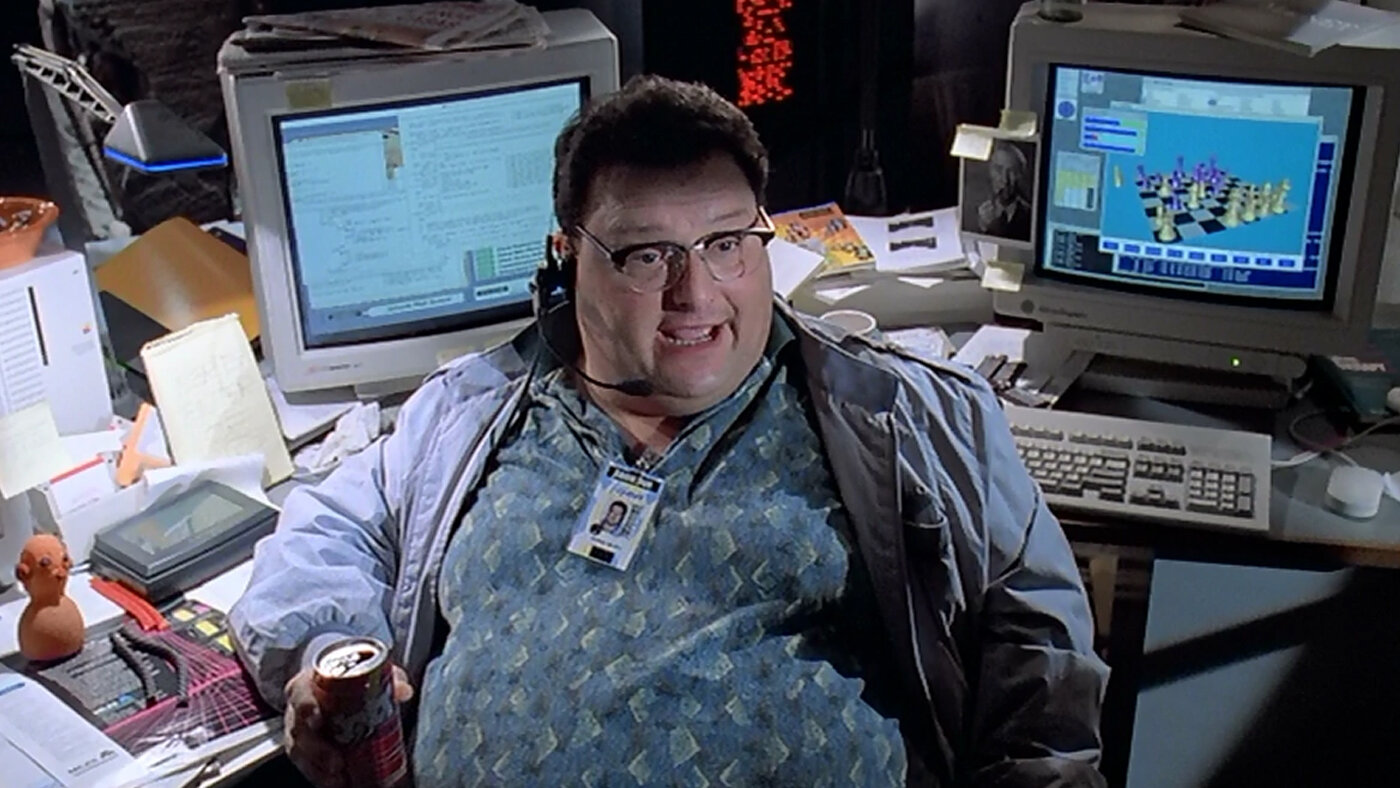
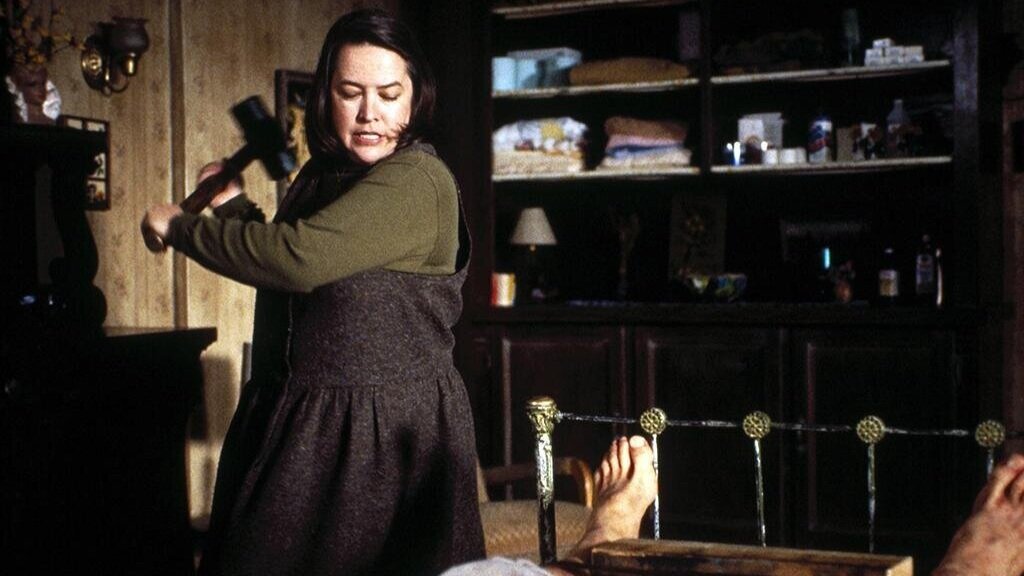
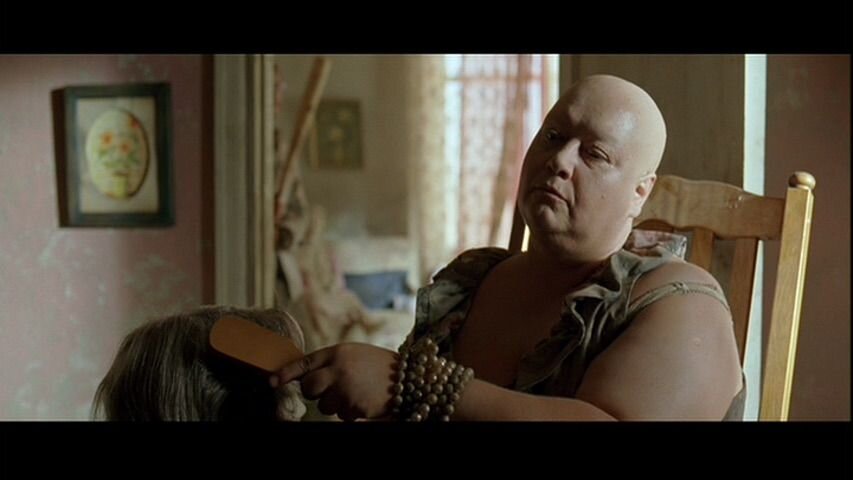


![[Editorial] Top 15 Female-Focused Body Horror Films](https://images.squarespace-cdn.com/content/v1/5fe76a518d20536a3fbd7246/1689081174887-XXNGKBISKLR0QR2HDPA7/download.jpeg)
![[Editorial] Editor’s Note: Getting sticky, slimy & sexy with body horror](https://images.squarespace-cdn.com/content/v1/5fe76a518d20536a3fbd7246/1689072388373-T4UTVPVEEOM8A2PQBXHY/Society-web.jpeg)
![[Editorial] Eat Shit and Die: Watching The Human Centipede (2009) in Post-Roe America ](https://images.squarespace-cdn.com/content/v1/5fe76a518d20536a3fbd7246/1691245606758-4W9NZWE9VZPRV697KH5U/human_centipede_first_sequence.original.jpg)
![[Editorial] 8 Short & Feature Horror Film Double Bills](https://images.squarespace-cdn.com/content/v1/5fe76a518d20536a3fbd7246/1687770541477-2A8J2Q1DI95G8DYC1XLE/maxresdefault.jpeg)
![[Ghouls Podcast] The Last House on the Left (2009) with Zoë Rose Smith and Jerry Sampson](https://images.squarespace-cdn.com/content/v1/5fe76a518d20536a3fbd7246/1687863043713-54DU6B9RC44T2JTAHCBZ/last+house+on+the+left.jpg)
![[Editorial] Top 15 Female-Focused Mind Horror Films](https://images.squarespace-cdn.com/content/v1/5fe76a518d20536a3fbd7246/1691247166903-S47IBEG7M69QXXGDCJBO/Image+5.jpg)
![[Editorial] If Looks Could Kill: Tom Savini’s Practical Effects in Maniac (1980)](https://images.squarespace-cdn.com/content/v1/5fe76a518d20536a3fbd7246/1694952175495-WTKWRE3TYDARDJCJBO9V/Screenshot+2023-09-17+at+12.57.55.png)
![[Editorial] 8 Mind Horror Short films](https://images.squarespace-cdn.com/content/v1/5fe76a518d20536a3fbd7246/1693504844681-VPU4QKVYC159AA81EPOW/Screenshot+2023-08-31+at+19.00.36.png)
![[Editorial] 5 Slasher Short Horror Films](https://images.squarespace-cdn.com/content/v1/5fe76a518d20536a3fbd7246/1696358009946-N8MEV989O1PAHUYYMAWK/Screenshot+2023-10-03+at+19.33.19.png)
![[Editorial] 8 Body Horror Short films](https://images.squarespace-cdn.com/content/v1/5fe76a518d20536a3fbd7246/1690838270920-HWA5RSA57QYXJ5Y8RT2X/Screenshot+2023-07-31+at+22.16.28.png)
![[Editorial] Editor’s Note: Making a slash back into September](https://images.squarespace-cdn.com/content/v1/5fe76a518d20536a3fbd7246/1694354202849-UZE538XIF4KW0KHCNTWS/MV5BMTk0NTk2Mzg1Ml5BMl5BanBnXkFtZTcwMDU2NTA4Nw%40%40._V1_.jpg)
![[Editorial] “I control my life, not you!”: Living with Generalised Anxiety Disorder and the catharsis of the Final Destination franchise](https://images.squarespace-cdn.com/content/v1/5fe76a518d20536a3fbd7246/1696444478023-O3UXJCSZ4STJOH61TKNG/Screenshot+2023-10-04+at+19.30.37.png)
![[Editorial] Metal Heart: Body Dysmorphia As A Battle Ground In Tetsuo: The Iron Man (1989)](https://images.squarespace-cdn.com/content/v1/5fe76a518d20536a3fbd7246/1690190127461-X6NOJRAALKNRZY689B1K/Screenshot+2023-07-24+at+10.08.27.png)
![[Editorial] Deeper Cuts: 13 Non-Typical Slashers](https://images.squarespace-cdn.com/content/v1/5fe76a518d20536a3fbd7246/1694951568990-C37K3Z3TZ5SZFIF7GCGY/Curtains-1983-Lesleh-Donaldson.jpg)
![[Ghouls Podcast] Maniac (2012) with Zoë Rose Smith and Iona Smith](https://images.squarespace-cdn.com/content/v1/5fe76a518d20536a3fbd7246/1696356006789-NYTG9N3IXCW9ZTIJPLX2/maniac.jpg)

![[Editorial] Cherish Your Life: Comfort in the SAW Franchise Throughout and Beyond the COVID-19 Pandemic](https://images.squarespace-cdn.com/content/v1/5fe76a518d20536a3fbd7246/1695487675334-MYPCPYYZQZDCT548N8DI/Sc6XRxgSqnMEq54CwqjBD5.jpg)
![[Editorial] Keeping Odd Hours: A Retrospective on Near Dark (1987)](https://images.squarespace-cdn.com/content/v1/5fe76a518d20536a3fbd7246/1696445070868-HU9YIL3QPBCL1GW47R3Z/Screenshot+2023-10-04+at+19.36.53.png)
![[Mother of Fears] Mothering in Silence in A Quiet Place (2018)](https://images.squarespace-cdn.com/content/v1/5fe76a518d20536a3fbd7246/1696445921315-HZJ2DZYQIH6VVWXBO2YL/Screenshot+2023-10-04+at+19.52.29.png)
![[Editorial] Soho Horror Film Festival: Interview with Aimee Kuge on Cannibal Mukbang](https://images.squarespace-cdn.com/content/v1/5fe76a518d20536a3fbd7246/1701808004722-9M8SZ2UXY52QBQBR4NTI/img20230818_15150780.JPG)
![[Event Review] Highlights from Mayhem Film Festival 2023](https://images.squarespace-cdn.com/content/v1/5fe76a518d20536a3fbd7246/1697624582491-MPT2VB9RRGU6OG7L6UKL/Mayhem+2023.jpg)
![[Editorial] The Art of Horror in Metal](https://images.squarespace-cdn.com/content/v1/5fe76a518d20536a3fbd7246/1695486401299-E5H2JNNJT26HKN0CI7WC/Screenshot+2023-09-23+at+17.20.28.png)
![[Editorial] 9 Horror Nintendo Switch Games To Play](https://images.squarespace-cdn.com/content/v1/5fe76a518d20536a3fbd7246/1697214470057-3XZXX8N4LYIMDFWS6Z3P/Screenshot+2023-10-13+at+17.20.13.png)
![[Editorial] 5 Female Focused Horror Book Recommendations](https://images.squarespace-cdn.com/content/v1/5fe76a518d20536a3fbd7246/1696441981361-52EQCTJ7AT2QF1927GM7/919xtm6d3fL._AC_UF894%2C1000_QL80_.jpg)
![[Editorial] What to Watch at This Year's Cine-Excess International Film Festival 2023](https://images.squarespace-cdn.com/content/v1/5fe76a518d20536a3fbd7246/1697213510960-REV43FEOZITBD2W8ZPEE/Screenshot+2023-10-13+at+17.01.15.png)
![[Editorial] Mayhem Festival: Interview with Thomas Sainsbury on Loop Track (2023)](https://images.squarespace-cdn.com/content/v1/5fe76a518d20536a3fbd7246/1697186472899-WC4RR0TW7L7LMFEBGPA2/Tom+Sainsbury.jpg)
![[Editorial] 10 Films & Events to Catch at Soho Horror Film Fest 2023](https://images.squarespace-cdn.com/content/v1/5fe76a518d20536a3fbd7246/1700819417135-299R7L4P0B676AD3RO1X/Screenshot+2023-11-24+at+09.41.52.png)






















![[Editorial] 9 Terrifying Cerebral Visions in Horror Movies](https://images.squarespace-cdn.com/content/v1/5fe76a518d20536a3fbd7246/1693509801235-X23OL50T1DVGECH0ZJK2/MV5BMjQ0MTg2MjQ4MV5BMl5BanBnXkFtZTgwMTU3NDgxMTI%40._V1_.jpg)
![[Editorial] 9 Best Slashers Released Within 10 Years of Scream (1996)](https://images.squarespace-cdn.com/content/v1/5fe76a518d20536a3fbd7246/1695478839037-LOFHGVM3H6BMSZW7G83M/Screenshot+2023-09-23+at+15.15.11.png)
![[Mother of Fears] I Don’t Wanna Be Buried in a Pet Sematary (1989) and (2019)](https://images.squarespace-cdn.com/content/v1/5fe76a518d20536a3fbd7246/1691328766069-QFNAVJOMFZVZ5CLU1RWM/Screenshot+2023-08-06+at+14.23.13.png)
![[Mother of Fears] Mother Vs. Monster in Silent Hill (2006)](https://images.squarespace-cdn.com/content/v1/5fe76a518d20536a3fbd7246/1695485781119-H6GNP0G3J2TLPAOIABV7/Screenshot+2023-09-23+at+17.11.56.png)

The year was 1968 and a young man named George A. Romero had shot his first film, a horror movie that would change the world of cinema and not just horror cinema, at that. Night of the Living Dead (1968), would go on to become one of the most important and famous horror films of all time as it tackled not only survival horror but also very taboo and shocking topics like cannibalism and matricide.